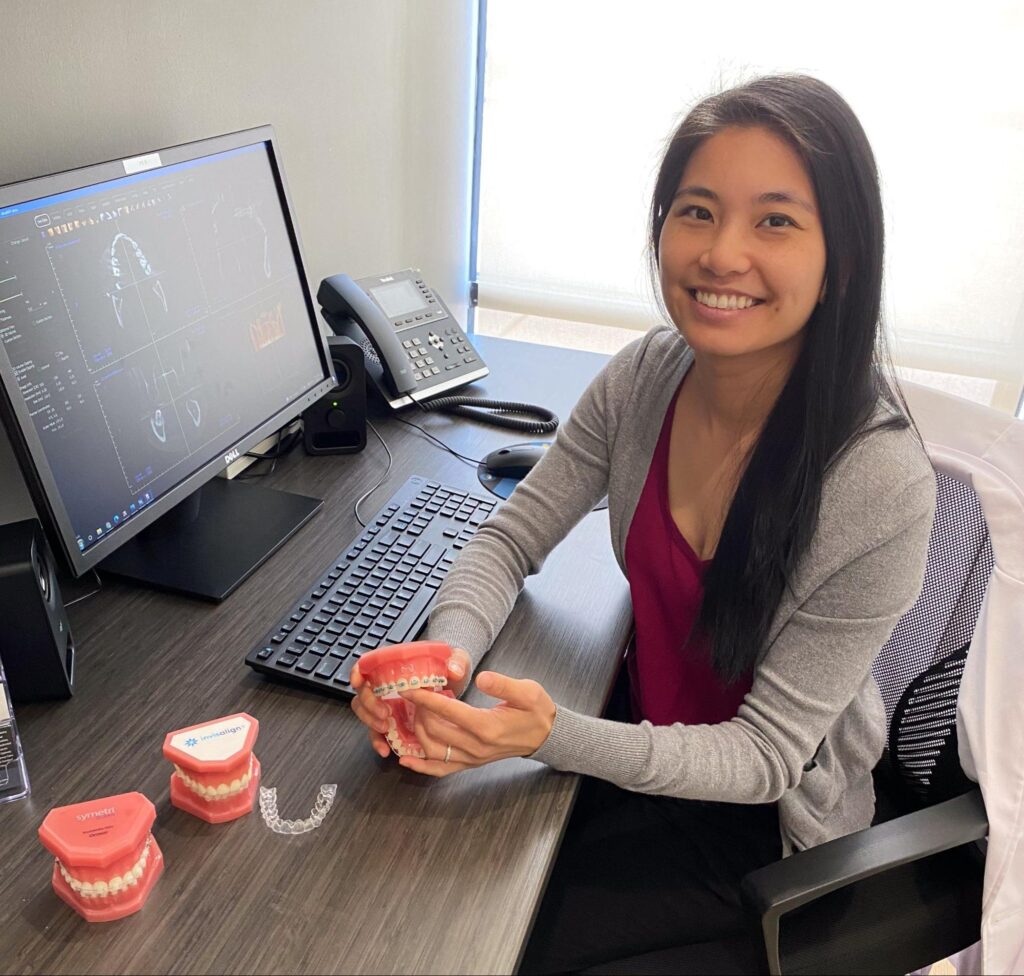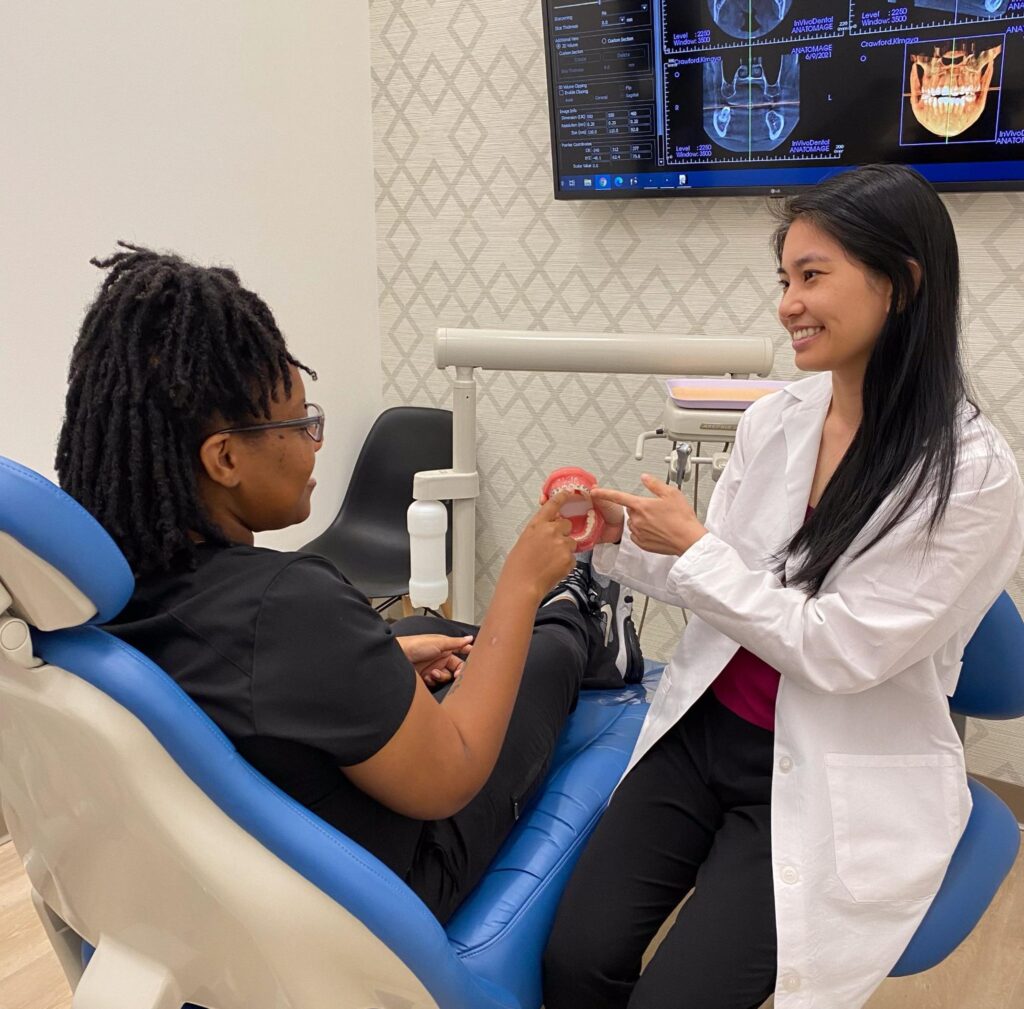Starting your orthodontic journey is so exciting, but it can also come with questions and curiosity, especially about how braces and clear aligners work to create beautiful smiles. At White Oak Dental & Orthodontics, we’re dedicated to patient education and guiding you through this transformative process, from understanding the mechanics of how braces move teeth to seeing the smile you’ve always dreamed of for the first time.
What Are Braces?
Braces and clear aligners are orthodontic appliances designed to straighten teeth and correct alignment issues. Traditional braces, made of either metal or ceramic brackets, use wires to apply continuous pressure, gradually moving teeth into their desired positions. On the other hand, Invisalign and Spark clear aligners are transparent, custom-fitted, removable trays that gently shift teeth into alignment.
How Do Braces Work?
Now that you know what they are and what they are made of, we can get into the fun stuff—how braces work! Remember when we said braces and clear aligners shift the teeth by applying pressure? That pressure is the key to your smile transformation because it stimulates a remarkable biological process within the jawbone, allowing teeth to move safely and effectively to their new positions.
Bone Remodeling: The Details
What exactly is this process that allows Dr. Lai to move your teeth almost painlessly? It’s called bone remodeling, and here is how it works:
When braces exert force on teeth, the periodontal ligament and bone surrounding each tooth are affected. On one side, the bone is broken down by cells known as osteoclasts, creating a path for the tooth to move into. The opposite side has osteoblasts building new bone to fill the space left behind, securing the tooth in its new location. This bone remodeling process is what allows orthodontic treatments to be both effective and safe, ensuring teeth move at a controlled pace and minimizing any discomfort.
The Importance Of Staying On Schedule
How braces work so efficiently, safely, and quickly relies heavily on the principle of regular adjustments. For fixed metal braces and clear braces, adjustments are typically made every 4 to 6 weeks by an orthodontist. They are crucial for maintaining the pressure to move teeth into ideal positions. During each visit, Dr. Lai may tighten the archwires, change the bands, or make other modifications to the braces.
In contrast, our Invisalign and Spark clear aligners offer a different approach to achieving the same goal. Instead of adjustments to wires and brackets, patients transition through a series of aligner trays, each slightly different from the last, to push the teeth where they need to go. The progression of the trays moves the teeth incrementally toward the desired alignment. This method combines the benefits of precise, planned orthodontic movement with the convenience of removable appliances, offering a practical and discreet alternative to traditional braces.
The effectiveness of orthodontic treatment, whether through traditional metal braces, clear braces, or clear aligners, significantly depends on your compliance with the custom treatment plans developed by Dr. Lai. These plans are tailored to address your unique orthodontic needs, considering the specific movements required to achieve optimal alignment. Regular visits to White Oak Dental & Orthodontics are essential, as they allow Dr. Lai to check your progress, adjust your braces as needed, and periodically provide new sets of aligners. These appointments are when our team fine teams the details of how braces work to ensure your treatment stays on track.

What Types Of Bites Can Braces Fix?
There are many kinds of bite issues, also known as malocclusions or misalignments of the teeth and jaw. Fortunately, braces can play a role in fixing all of them. According to the American Association of Orthodontics, these are the most common bite alignments. Let’s check them out!
- Overbite: Where the upper front teeth extend too far over the lower front teeth.
- Underbite: Characterized by the lower front teeth sitting in front of the upper front teeth when the mouth is closed.
- Crossbite: Occurs when some of the upper teeth sit inside the lower teeth rather than on the outside when the mouth is closed.
- Open bite: A gap between the upper and lower teeth when the back teeth are closed.
- Crowding: Insufficient space in the mouth causes teeth to overlap, twist, or get pushed to the front or back.
If none of these conditions seem to apply to you, rest assured. Braces and clear aligners can help improve uncommon bite issues, too. At White Oak Dental & Orthodontics, our goal is to give you a beautiful smile and a functional, healthy bite that improves your quality of life. Through expert care and advanced orthodontic solutions, we address bite concerns and guide our patients toward perfect, ideal alignments.
How Long Do Braces Take To Straighten Teeth?
Our team gets asked, “How long will I be in braces?” frequently. At White Oak Dental & Orthodontics, we want to help you achieve your dream smile as quickly as possible. However, there are a lot of factors that can affect the duration of your orthodontic experience, like how well you follow Dr. Lai’s instructions—taking care of your braces, sticking to your aligner schedule, and attending your suggested appointments on time—and the severity of your alignment needs—all affect how long you’re in braces.

For More In-Depth Information About How Braces Work, Visit White Oak Dental & Orthodontics!
We encourage current and potential patients to contact us in Avenel at your convenience to ask all your questions. Whether you want to know, “How do braces work?”, “Can I eat this with braces?” or “What do I do if I lose one of my clear aligners?” we’re always happy to help!
